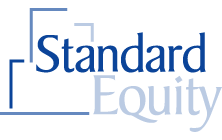Understanding Financial Uncertainty
The COVID-19 pandemic has undoubtedly reshaped our perception of financial stability. Coming out of it, many are left pondering the uncertain financial risks that lie ahead. Though predicting such events remains challenging, adopting strategic measures can significantly minimize these risks.
Staying Ahead of Emerging Risks
As financial advisors, we are committed to tracking market developments, economic shifts, and prevailing trends to empower our clients' financial decisions. Here, we identify four prevalent risks and suggest effective strategies to counter them.
Outliving Your Money
Medical advancements and healthier lifestyles have extended life expectancies, making it crucial to plan for longer retirement periods. You may want to consider strategies that deliver income like a pension. That is, consistent income guaranteed for as long as you and your spouse live. Annuities may offer a reliable solution, providing a steady income throughout retirement. Additionally, postponing Social Security benefits can boost payouts by 8% annually until age 70. This option is particularly advantageous for those experiencing peak earnings in their careers, as Social Security calculates benefits based on the 35 highest-earning years, adjusted for inflation.
Rising Medical Expenses
Longer life spans also drive a rise in demand for healthcare services, and consequently, costs. Planning for these expenses is vital. Tools like long-term care insurance and Health Savings Accounts (HSAs) help cushion these costs, safeguarding retirement funds. Millions of aging baby boomers are pushing up the cost of post-retirement health care, including long-term care for chronic conditions such as stroke, Parkinson’s and Alzheimer’s. Anyone in this demographic should have a plan to finance these expenses. Strategies including long-term care insurance and Health Savings Accounts (HSAs) can protect your savings.
Changes in Markets or Market Volatility
Market volatility is inevitable, and a potential problem as one nears or enters retirement. Managing volatility often requires a gradual reduction in portfolio risk with age, transitioning from high-risk portfolios in youth to more conservative allocations in later years. However, periods of high inflation can challenge maintaining a conservative risk levelWhile the accumulation strategies of the last 30 years may no longer be appropriate, the sequence of returns (market gains and losses) while distributing retirement income may determine whether your portfolio lasts as long as you live.
Inflation
To combat inflation and maintain purchasing power, balanced exposure to growth-driven investments like stocks is essential. Investments like Treasury Inflation-Protected Securities (TIPS), which adjust returns in line with inflation rates, can offer further protection. To preserve your purchasing power, growth-oriented investments still matter. Strategies that participate in growth to a cap in exchange for limiting or eliminating market losses may be appropriate.
If your circumstances have changed or if you have specific questions, feel free to reach out to us. Our team is always here to assist with financial guidance at your convenience.
